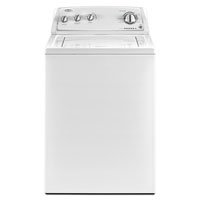With so many cleaning supplies and personal care items in our homes these days, it's no wonder that few of us have any idea about which of them are skin irritants. The worse culprits bring redness, itching or inflammation, others bring on stinging or burning. Some reactions are triggered by your own allergy (contact allergic dermatitis) while others cause problems for everyone (contact irritant dermatitis).
Here are the "dirty dozen":
1) Soap - frequent washing using soap and water, while tough on germs, also strips your skin of natural oils, leading to what they used to call "dishpan" hands. Your skin might just look chapped at first, but if you don't do anything about it, it will crack and bleed. Other related irritants are bubble bath, body washes and dishwashing liquid.
2) Household Cleaners - most of us know full well what these products can do to our skin. Wearing protective gloves when working with all purpose cleaners, dish and laundry detergents, window cleaners, furniture polish, drain cleaners and toilet disinfectants is the best way to protect your skin.
3) Fabric Dryer Sheets - believe it or not, fabric softener and those handy dryer sheets can bring itchy, irritated skin. Doctors see the rash in places that are covered by clothing, with less in areas that are not. Try fragrance free liquid fabric softeners to lessen the effect and still get rid of static.
4) Clothing - especially rough fabrics like wool can be troublesome for those who have a skin problem known as atopic dermatitis (the most common form of eczema). Cotton and cotton-poly fabrics are best if you are one of the 10-20% of children or 1-3% of adults who have this condition.
5) Heat - the hot weather can aggravate skin problems because of sweating. You might see redness or chafing in some spots. While you can't move from a hot climate if that's your home, you can make an effort to reduce sweating by staying in cool places and bathing frequently.
6) Latex - some people are hypersensitive to latex, a natural rubber in everything from those gloves in your doctor's office to condoms. If latex is a problem for you, you'll see raised, red marks under a bra strap or elasticated waistband. Some people who are allergic to latex may also have reactions to fruits like bananas and kiwi.
7) Fragrances - while they may smell wonderful to some, allergies to scents are very common. For some it's musk while others struggle with different smells. Since there are some 5,000 fragrances that use different combinations of chemicals, finding the one that bothers you is particularly difficult. Avoidance, or limiting you exposure is best in these cases.
8) Face Creams - the skin on your face has deep pores that easily absorb creams, meaning you should be careful with what skin care products you use - especially if you feel a burning or stinging when you apply them. Wrinkle creams, cleansers and skin peels are all culprits. Your best bet is to check the labels for well-known irritants like ascorbic acid, paraban preservatives and alpha hydroxy acids (glycolic acid, malic acid, lactic acid) and avoid as best you can.
9) Plants - like poison ivy, poison oak and poison sumac are the most well known causes of allergic contact dermatitis in the U.S. While a mild reaction can last 5 to 12 days, more severe reactions can linger for 30 days or longer. Learn how to recognize all three of these plants so you're able to avoid them.
10) Food - allergies to foods can bring skin reactions such as hives and rashes, but even handling some foods can cause trouble. If you have any open cut on your hands, working with acidic foods or spices can be particularly dicey.
11) Nickel - a substance that's in costume jewelry, watchbands, zippers and more and is a common allergy. In severe cases people have reactions to vitamins or the metal used to repair a fracture in a limb. Your best bet here is to avoid the substance if you know its trouble for you.
12) Sunscreen - while everyone advises you to wear sunscreen to protect your skin from damage by the sun, some chemical agents in the sunscreen itself can lead to the development of a rash or an allergic reaction. Most often this happens with products that have PABA based chemicals, so look for PABA free.
Now that you know a bit more about the most common skin irritants, you can shop as an informed consumer and hopefully put an end to your own skin problems for good.










